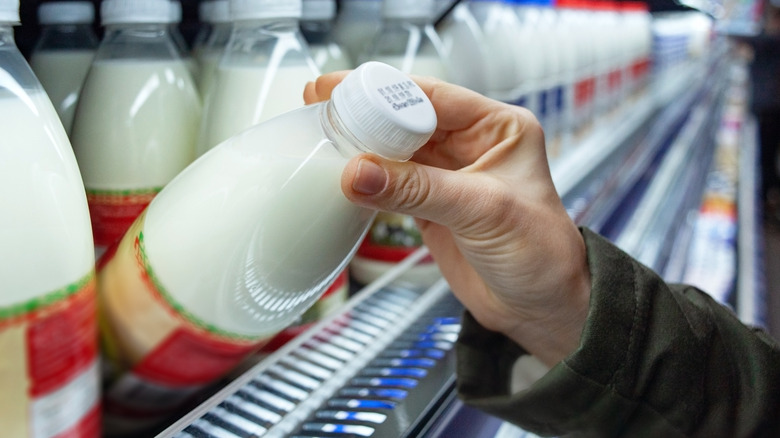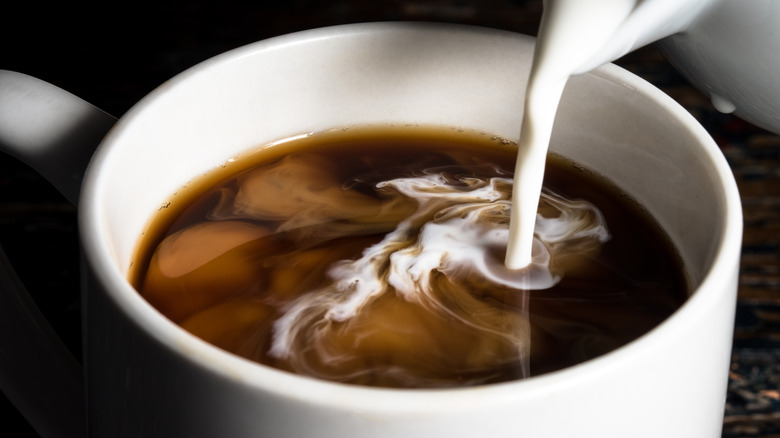Why Does Half-And-Half Last Longer Than Milk?
You're standing in front of the dairy case at your local grocery store, shuffling through milk bottles looking for the latest expiration date. If you find one 10 days out, you're golden. May as well pick up some half-and-half for your coffee while you're at it. What's this? The expiration date on the carton right in front shows a best-by date that's six weeks out? How is that possible?
Let's back up a step and take a look at the difference between milk and half-and-half. Invented by William A. Boutwell in the early 20th century, half-and-half hit the market as a convenience item. Before Boutwell began mixing equal portions of milk and cream together in a single bottle at his dairy in Lake Worth Beach, Florida, anyone could make half-and-half by doing the exact same thing at home in their own kitchens. The convenience of a pre-mixed blend caught on and eventually became a supermarket staple. But, not all half-and-half is created equal. According to an FDA mandate, a product labeled half-and-half can contain anywhere from 10.5% to 18% milk fat. That's a pretty big range, but does it matter? Maybe. Maybe not.
It comes down to fat content
The FDA stipulates products labeled whole milk must contain at least 3.25% milk fat and heavy cream can be anywhere from 36% to 40% milk fat. Blended together, the fat content in half-and-half is at least 7.25% higher than whole milk. The science is tricky, but the gist is the higher fat content leaves less room for water and, thus, for microorganisms. The kind of bacteria that turns dairy sour needs water to thrive.
If higher fat content is the reason half-and-half last longer than milk, does it follow that whole milk lasts longer than skim milk? Not necessarily. In fact, it's a point of contention in the dairy community, with one side arguing skim milk lasts longer than whole milk because microbes that thrive on fat can't grow and the other adhering to the principle that lower water content in whole milk makes it last longer. And then there's the middle ground — a whole bunch of people who chalk up any difference between the two to a matter of taste buds. Adding to the confusion, a research study created to make a determination came up short, with no definitive finding.
Whether it's half-and-half versus whole milk or whole milk versus skim milk, the smell test is probably more reliable than expiration dates. According to EatByDate, half-and-half is good for seven to 10 days after the printed expiration date and whole milk is usually okay for five to seven days beyond its best-by label.

